The Dell Venue 11 Pro 7000 Review
by Brett Howse on April 16, 2015 8:00 AM EST- Posted in
- Tablets
- Dell
- Windows 8.1
- Core M
CPU Performance
Dell offers the Venue 11 Pro with a choice of two Core M processors. The 5Y10 is the lower cost option, and it has an 800 MHz base frequency with a 2.0 GHz boost frequency. As we have seen in our Core M analysis, this will cut the performance in short workloads as compared to the higher end Venue 11 Pro that Dell shipped us for review, which comes with the top Core M offering in the 5Y71 model. At 1.2 GHz base frequency and a 2.9 GHz boost frequency, this Core M can provide some impressive performance on the kinds of short workloads that make up most of the average tasks that most people perform on a tablet, but depending on cooling, it can slow down on sustained workloads.
The Venue 11 Pro is a passively cooled device, and as a tablet, Dell must take skin temperatures into account. The placement of the processor is not 100% ideal either since it is in the upper right corner (with the tablet display facing you) so if you are holding it in your right hand while it is working hard, you can certainly feel it getting warm, but not to the point where it is ever uncomfortable. It can get to around 44°C right over the CPU after 45 minutes of DOTA 2, with the rest of the tablet staying cool.
As you can see in the above image, the CPU heatsink is all copper, and there is a thin copper sheet on the back cover as well to help spread the heat. Given enough cooling, Core M can perform quite well, but being packed into a tablet with a plastic back and no fan can certainly cause issues.
To test overall system performance, we will turn to our suite of benchmarks to see where the Venue 11 Pro fits. As this is a tablet, but can dock and become a laptop or desktop, we will compare it against both devices. First up, we will focus on Windows performance, then move to tablets.
PCMark

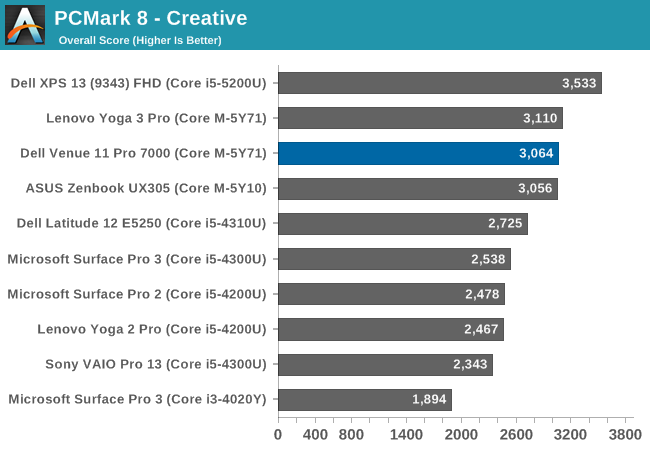
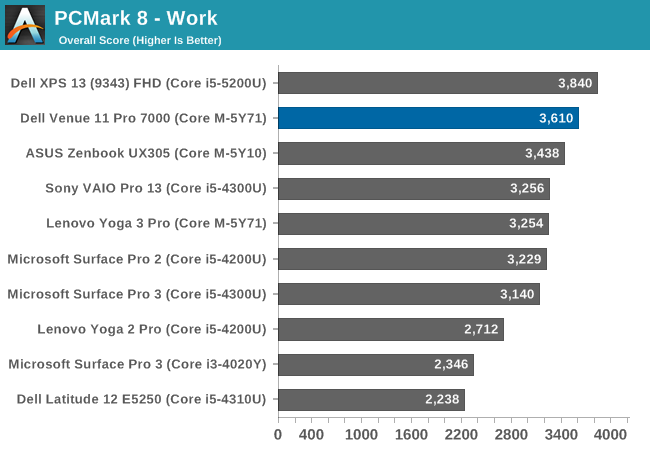
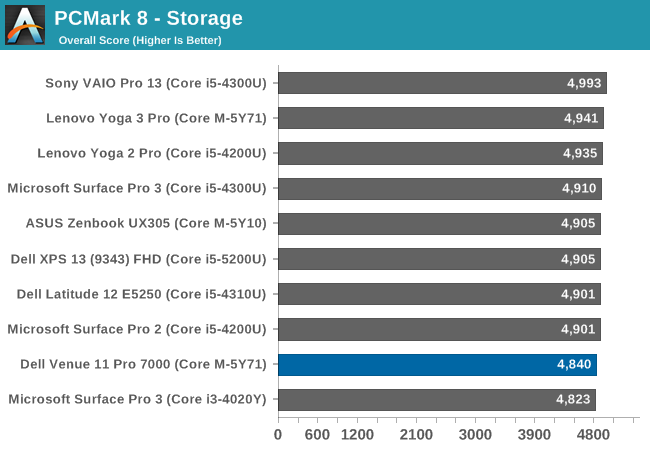
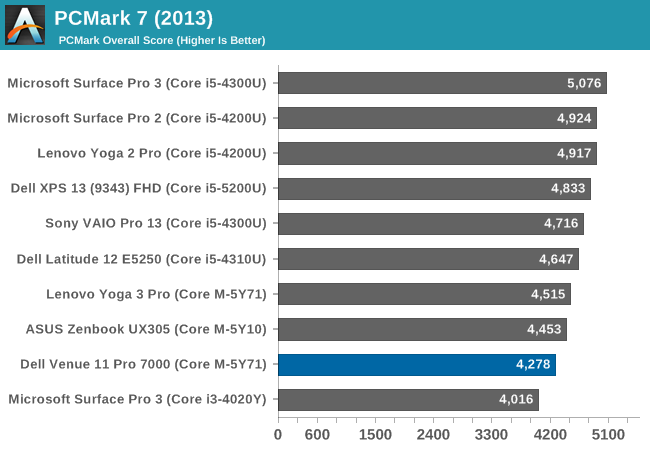
PCMark 8 from Futuremark has several benchmarks within it, all with the goal of simulating real-world use cases for each of the scenarios. It includes Home, Creative, Work, and Storage benchmarks. The workloads generally include both burst and sustained performance. Core M does very well here, with the Venue 11 Pro pulling ahead of some of the other Core M devices in some tests. In these types of workloads, Core M can outperform Haswell-U series parts from the Ultrabooks of last year, which is fairly impressive in a passively cooled device.
The storage score is also very good, due to the SSD inside this tablet. Windows tablets with Atom processors tend to include eMMC, which can still outperform a hard disk drive, but cannot really match a true SSD.
TouchXPRT 2014
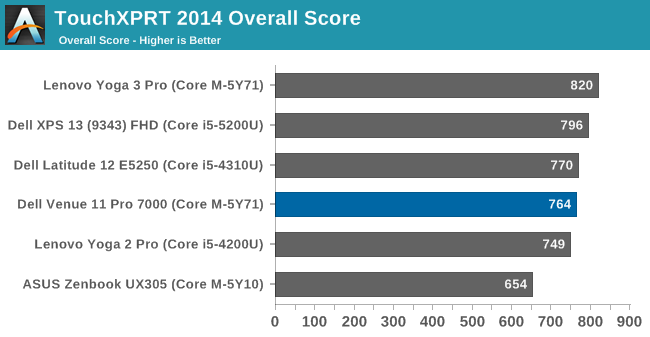
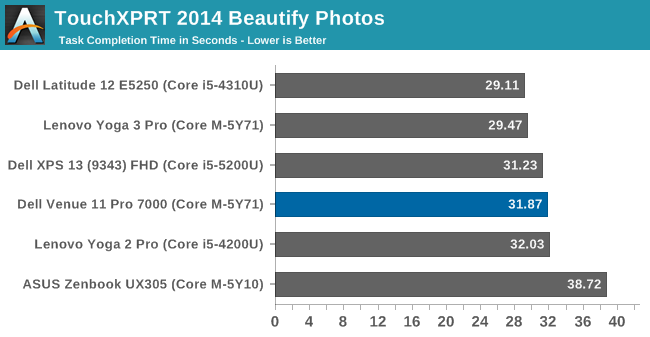
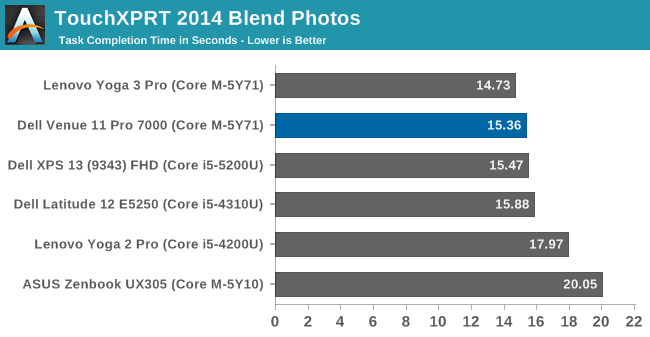

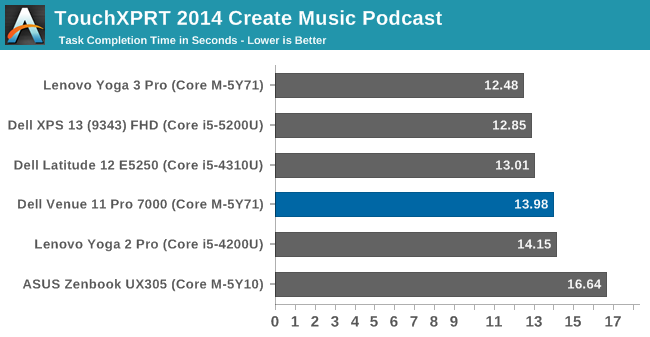
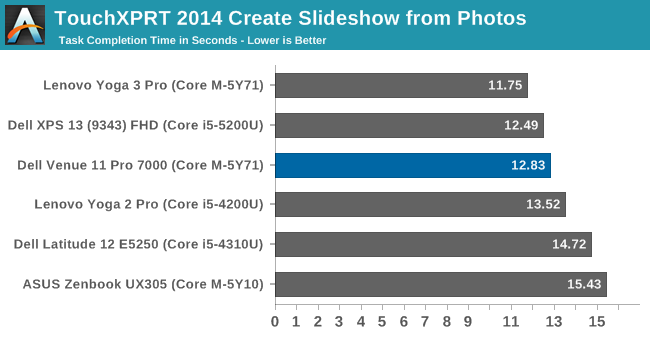
Once again the Core M-5Y71 does fairly well in this test, which includes photo manipulation, podcast creation, and slideshows. Each task executes quickly, allowing the Core M to cool down before the next task. This test shows a large difference in performance from the higher clock speeds of the 5Y71 and the lower speeds of the ASUS Zenbook’s 5Y10 processor.
Cinebench
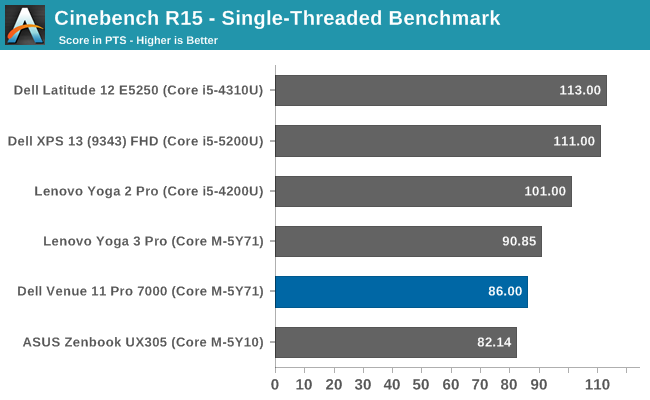
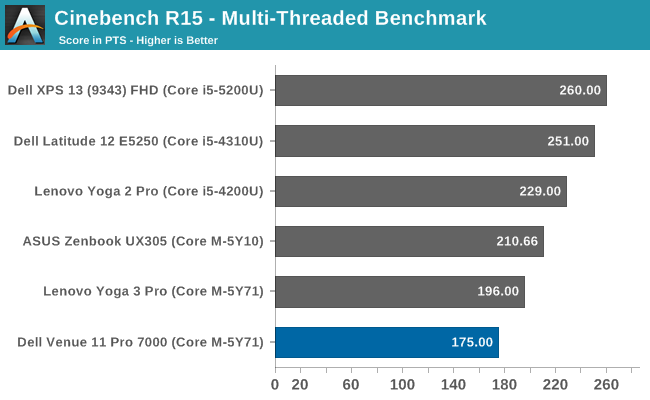
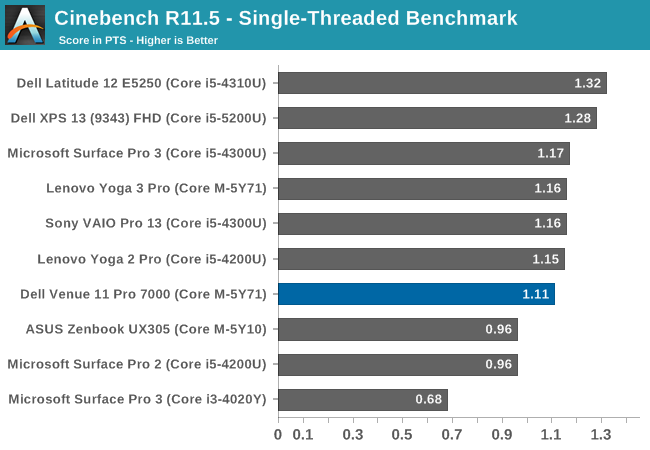
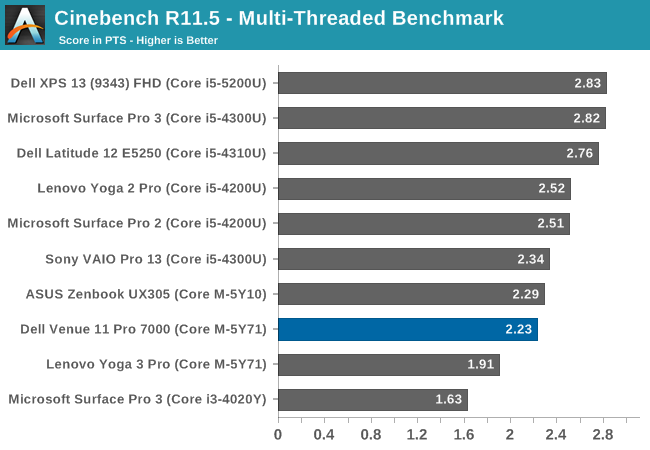
Cinebench is a rendering test, and loads either one CPU or all CPUs (which is four logical CPUs in Core M) and scores based on the time it takes to render the supplied scene. It favors higher clock speeds and good sustained performance. The Venue 11 Pro cannot sustain its maximum 2.9 GHz for this test for either the single-threaded or multi-threaded versions. This is not an ideal workload for Core M.
x264
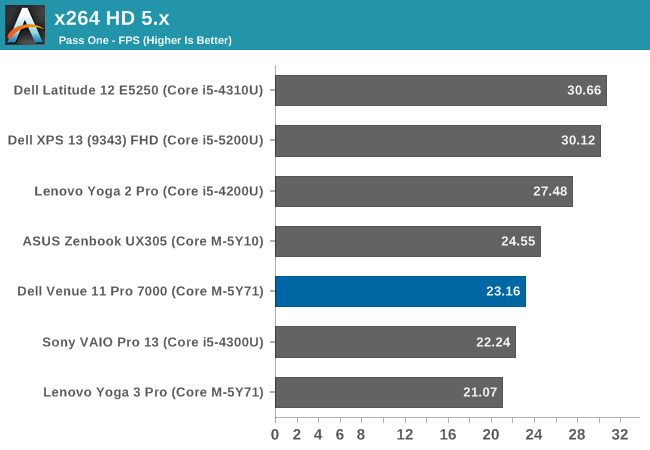
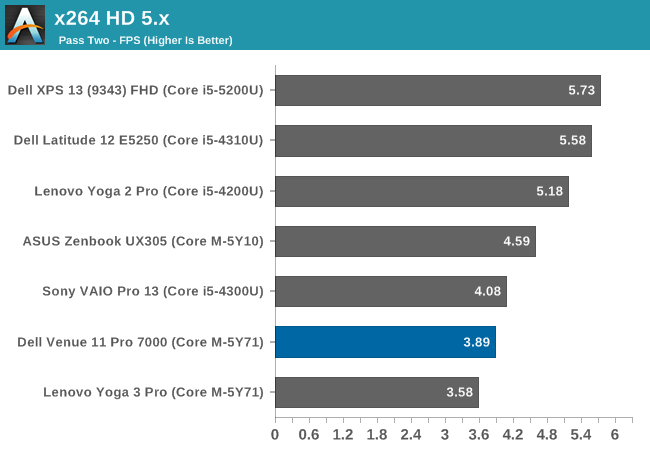
This is a very long benchmark which converts a video. This test emphasizes sustained performance as well, so Core M does not do very well on it.
GPU Performance
Core M includes the Intel HD 5300 GPU, which is the same GPU configuration as seen in the Broadwell-U processors. There are 24 EUs available, with a base GPU speed of 300 MHz, and turbo of 900 MHz, but of course in a 4.5 watt thermal envelope rather than the 15 watts of Broadwell-U.
While certainly not a system where you would expect to play the latest FPS out there, tablets can certainly be used for lower end gaming titles like those offered in the Windows Store.
3DMark

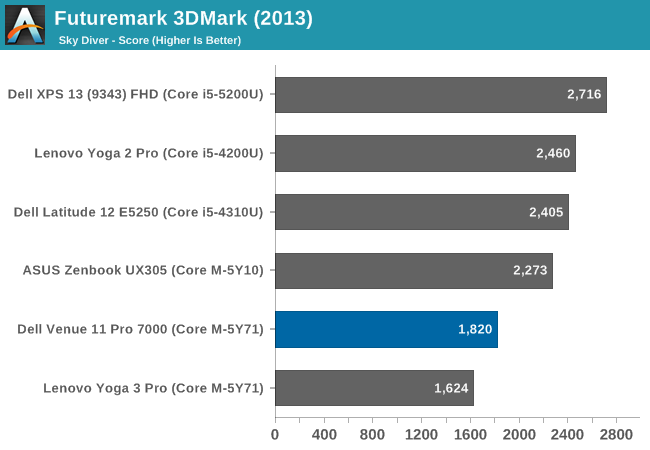
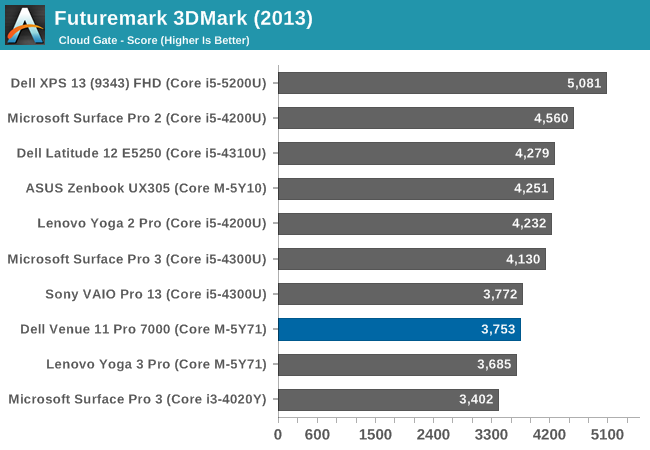
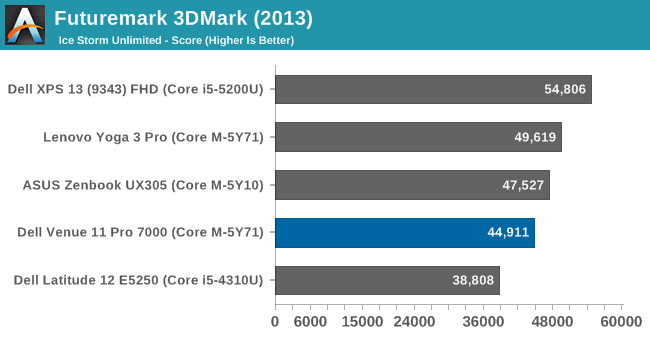



Futuremark’s 3DMark has several benchmarks which are aimed at different classes of devices. Sky Diver is aimed at mid-range PCs and gaming laptops, so unsurprisingly Ultrabooks do not do overly well on this test. The sustained performance requirements mean that Core M in a tablet is going to have to throttle quite a bit, and it shows in the overall scores. Cloud Gate shows a similar result. Although the Core M ASUS Zenbook UX305 can compete with Haswell-U based notebooks, the Dell Venue 11 tablet falls down to around the Ivy Bridge levels of GPU performance. Ice Storm Unlimited is better, but is such a short benchmark that throttling is not as big of an issue.
GFXBench
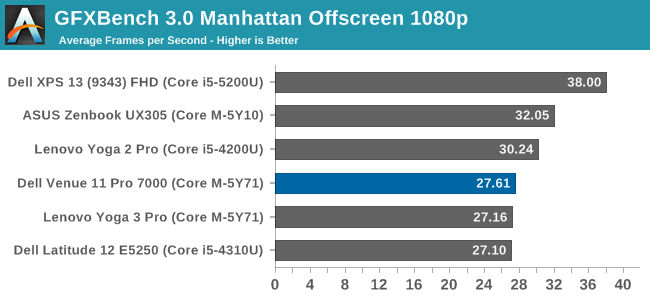
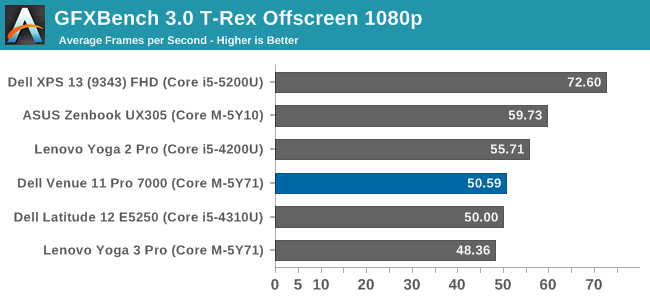
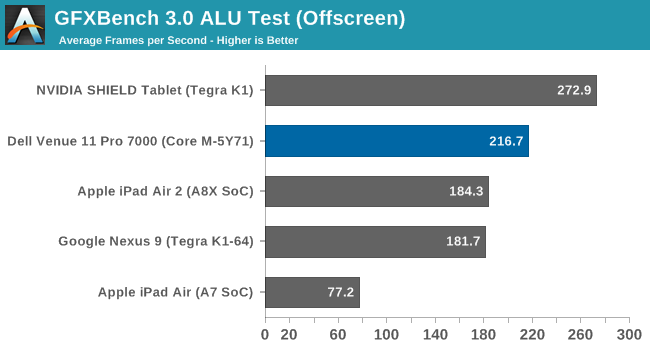
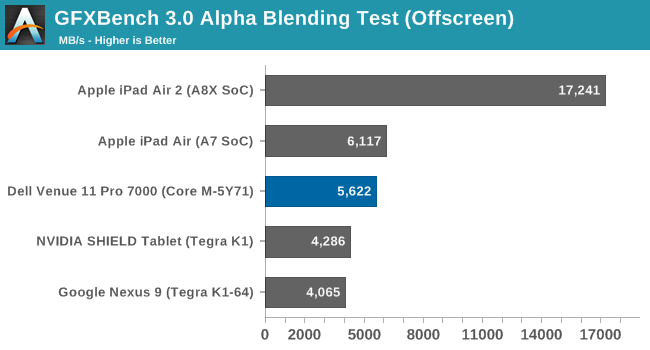
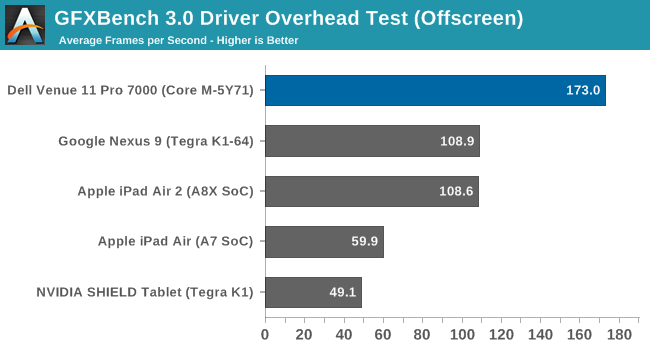
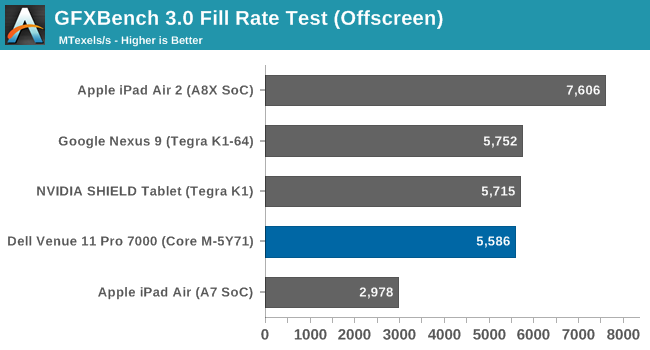
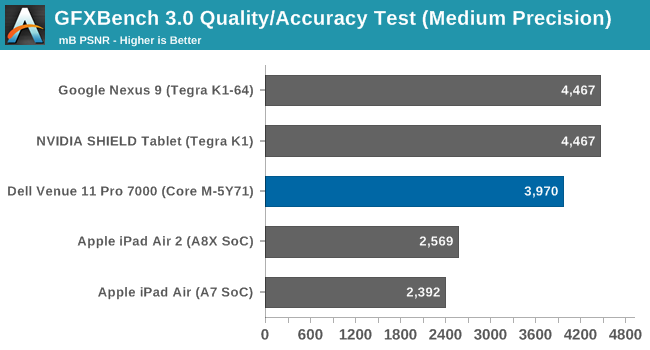
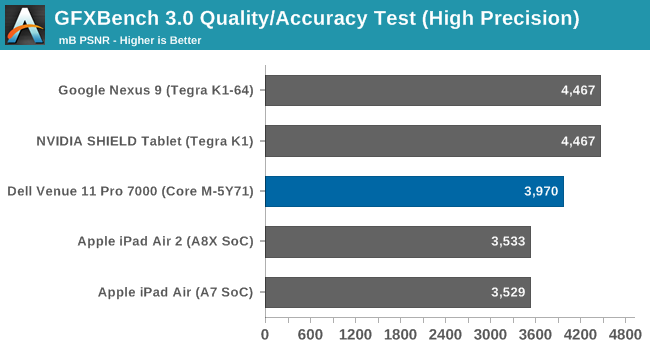
GFXBench follows in line with the 3DMark tests. Core M does not have great sustained GPU speeds. On the CPU side of the house, Core M can trade blows with last year’s Haswell-U parts, but the same cannot be said of the GPU. It has everything it needs to outperform the Haswell-U except that processors 15 watts of TDP.
DOTA 2
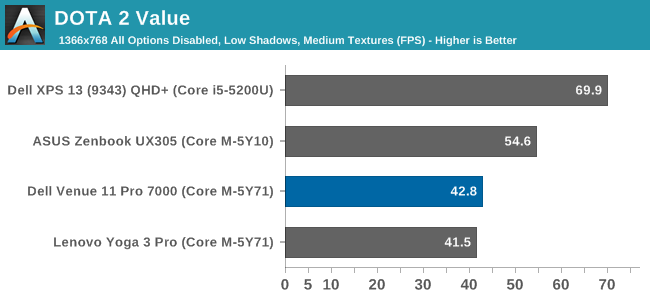
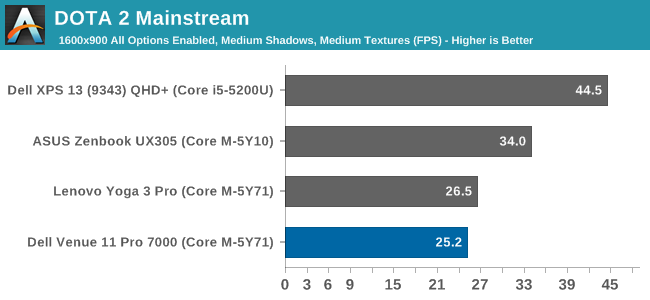

Our DOTA 2 benchmark confirms what the synthetic tests have shown. Only the value settings on DOTA 2 really allow for ok gameplay. But remember this is comparing a tablet against notebooks and 2-in-1 devices, so it is not unexpected that performance will go down to fit into the smaller overall package.


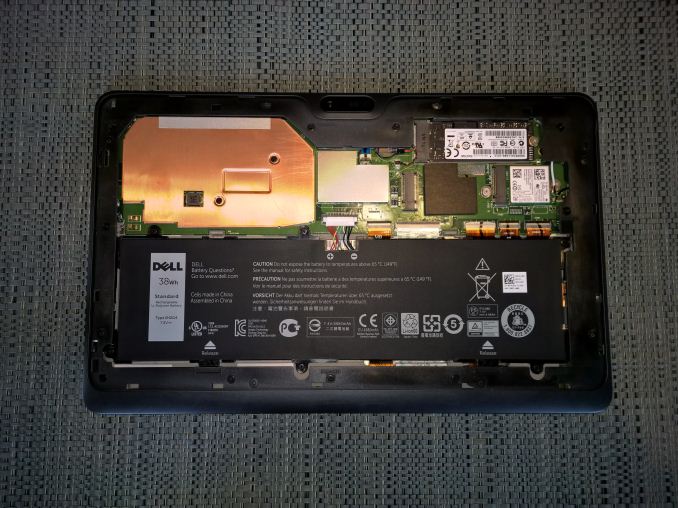








92 Comments
View All Comments
NeatOman - Thursday, April 16, 2015 - link
I'm sorry, that thing is hideous... the border is from a crappy tablet from 2-3 years ago. I deployed Yogo Pro 2/3 and Surface Pro 3 (I'll try a Surface 3 once there out) but i know that no one will want that despite its functionality. Sorry Dell :-/Azurael - Thursday, April 16, 2015 - link
I think I'm glad I have a 7130 (Haswell-Y, active cooling) rather than the Core M 7140. The fan doesn't generally come on unless it's pretty heavily loaded, battery life is great, and even my base i3 model seems to outperform this one under sustained load. I hate the 16:9 aspect ratio and the way the capacitive Windows key wakes it (I think this is an MS requirement though?) - and Windows is still a poor tablet OS, but I do love this device. It runs Android really well, too :)Replaceable batteries, SSDs and Wireless cards are a boon (in fact, I had to replace the Dell Atheros card that came in mine with an AC-7265 for Android compatibility) and unheard-of in the tablet world,I hope they continued that...
I've got one of the silver active styluses too, I had an A01 black model, which was terrible - almost unusable since it would lose tracking mid-stroke but Dell sent me the silver one FOC and it's been great. Much better battery life, too (who thought AAAA batteries were a good idea?!) It's nice to use in Photoshop, but I'm not much good at drawing so I can't say how it compares to the Wacom digitiser on the Surface Pros...
awall13 - Thursday, April 16, 2015 - link
Regarding the port placement, I wanted to comment that I wish our Surface Pro 3 had its display and USB ports located lower... I rarely hold the tablet while it is plugged in to something; a more common use case is having it sitting on a desk plugged in, where lower ports seem advantageous so that there is less torque on the port from a hanging cable, and it is less cluttered. So I wouldn't take issue with Dell's choice of port placement, personally.metayoshi - Thursday, April 16, 2015 - link
Good to know that I probably would have made a good decision had I decided to go with this instead of the Surface 3. As much as Core M excites me, it really was the price range that pushed me to drop money on a Surface 3 instead of this. Sure, I lost Core M for Atom performance, but had I had that extra $200 in my budget, I would have jumped on the Dell Venue 11 Pro as soon as the 5Y71 version was released. I don't think I'll regret my decision for now, but something with that kind of power in a 4.5W TDP device is really enticing.eanazag - Thursday, April 16, 2015 - link
I think the battery measurements need to be reported with and without the mobile keyboard. We have no idea what the tablet does on its own in battery life.The dock with 10/100 is a regression. The WiFi is better than that. The dock does not support 3 monitors with integrated graphics.
I think Microsoft has a better polished solution in the Surface series.
Hulk - Thursday, April 16, 2015 - link
Don't know about this tablet but Imperial Walkers are very cool.And what are the little guys called again? Also very cool.
J_Hyde - Thursday, April 16, 2015 - link
The LTE version has been mentioned from the day this tablet was introduced, but it's not on Dell's website. It is mentioned in the user manual. I've chat'd with Dell Sales support and they are not aware of when it will be released.I suppose a WiFi hotspot, or a USB based LTE modem would work, but was really looking forward for a Windows tablet with LTE... At the moment, I'm still waiting
(By the way, the documentation on the site on whether there is an LTE modem is remarkably inconsistent)
lewisl9029 - Thursday, April 16, 2015 - link
I'd like to see a review of the HP Elite x2 1011, which has a similar form factor as this and offers similar accessories, except it has fans for active cooling, which I think might mean we can see the true performance potential of these M-5Y71 chips.Morawka - Thursday, April 16, 2015 - link
Last years model had a removable battery. are you sure this doesn't have one? It has the removable back just like last years, so one would think they would keep the removable battery, especially if this product is aimed at the enterprise market.JumpingJack - Friday, April 17, 2015 - link
"At 10.8 inches in screen diameter"Diameter is a term which describes an attribute associated to a circle. You mean "At 10.8 inches measured at the diagonal for the screen"